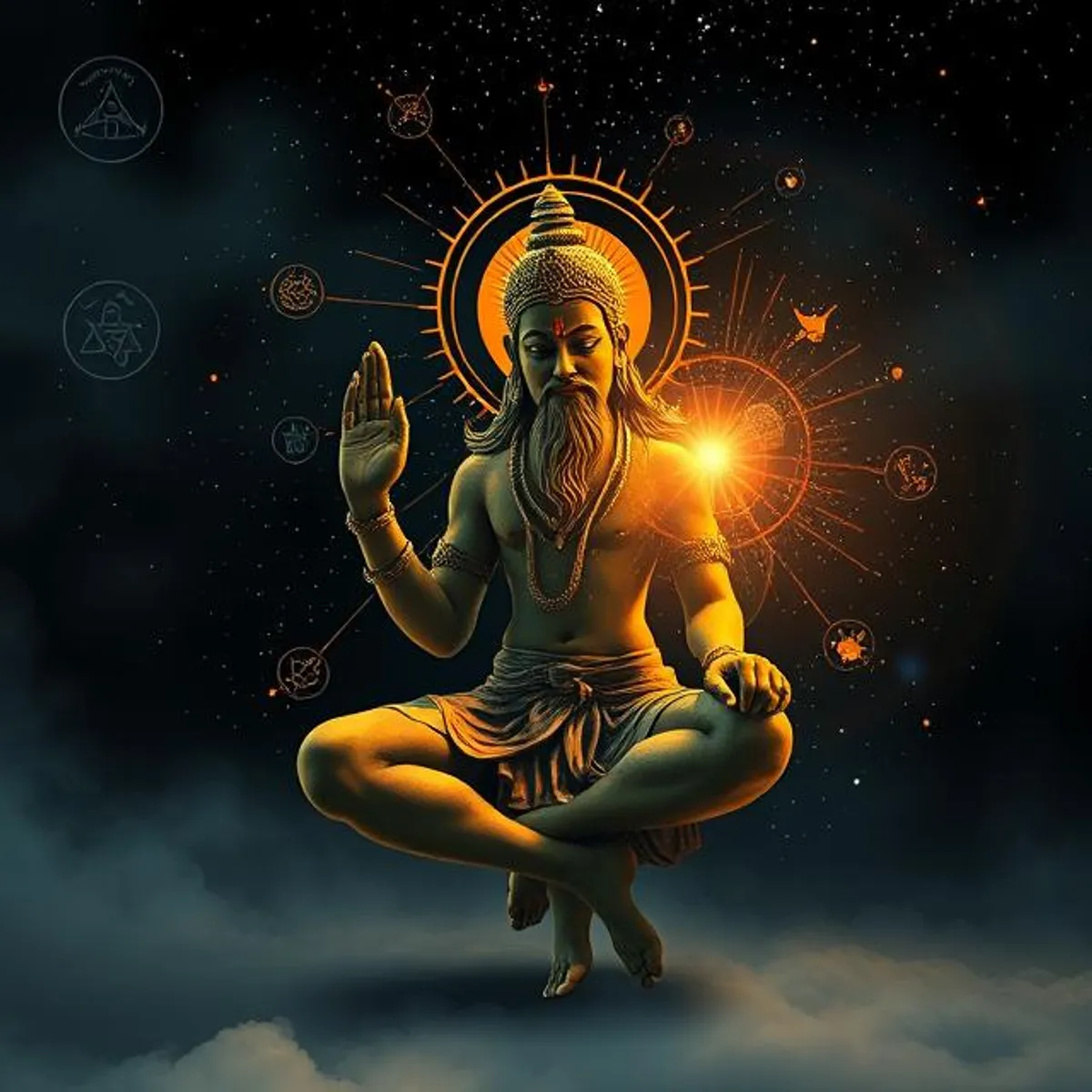Prepared with respect for both spiritual traditions and scientific inquiry.
Scientific Interpretation of Hindu Religious Concepts
This blog presents a professional exploration of how Hindu religious beliefs—particularly those from texts like the Ramayan, Mahabharat, and Vedic philosophy—can be understood through the lens of modern science. The goal is not to discredit spiritual beliefs, but to demonstrate how ancient wisdom often aligns with, or metaphorically anticipates, modern scientific principles.
CHAPTER 1. God as Energy (Brahman and Quantum Reality)
Hindu Perspective
In Sanatan Dharma, Brahman is described as the formless, omnipresent, eternal source of all existence. It is beyond attributes, yet present in all.
Scientific Perspective
Modern physics describes the universe as composed of quantum fields and energy. At the most fundamental level:
- All matter is energy (Einstein’s (E = mc^2)).
- Quantum Field Theory proposes that particles are excitations of underlying fields.
- Everything is interconnected through a unified quantum fabric.
Interpretation
Brahman can be analogized to the unified quantum field, the invisible, eternal energy source that gives rise to all forms in the universe.
CHAPTER 2. Creation (Big Bang and Cosmic Cycles)
Hindu Perspective
Hindu cosmology describes the universe as cyclically created, sustained, and destroyed by deities: Brahma (creator), Vishnu (preserver), and Shiva (destroyer). The universe undergoes vast time cycles (Kalpas, Yugas).
Scientific Perspective
The Big Bang Theory suggests that the universe began ~13.8 billion years ago from an initial singularity, expanding and evolving into its current form. Emerging theories include:
- Cyclic Universe or Big Bounce (where the universe contracts and re-expands).
- Multiverse theory (multiple universes in various states of birth and death).
Interpretation
- Brahma symbolizes the initial expansion (Big Bang).
- Vishnu represents the physical laws preserving order.
- Shiva reflects entropy and cosmic collapse.
- The Yugas may metaphorically represent cosmic cycles or eras.
CHAPTER 3. Time as God (Kāla and the Arrow of Time)
Hindu Perspective
Kāla (time) is considered the ultimate controller. Even gods and universes are subject to time. In texts like the Mahabharat, Krishna identifies himself as Kāla, the destroyer of worlds.
Scientific Perspective
Time is a fundamental dimension in Einstein’s theory of spacetime. Key ideas:
- Entropy increases over time (Second Law of Thermodynamics), making time irreversible.
- Time governs causality, decay, transformation, and eventual death of all systems.
Interpretation
Time behaves as an unstoppable, omnipresent force—just as described in Hinduism. It determines the fate of all things. In that sense, Time is the real ‘god’ in both spiritual and scientific domains.
CHAPTER 4. Mapping Hindu Concepts to Scientific Ideas
| Symbol | Hindu View | Science Equivalent |
|---|---|---|
| Brahma | Creator | Big Bang / Energy Field |
| Vishnu | Preserver | Laws of Physics / Equilibrium |
| Shiva | Destroyer | Entropy / Time / Decay |
| Atman | Soul | Consciousness (neuroscience debates) |
| Maya | Illusion | Perceived Reality (Brain filters) |
| Karma | Cause-effect | Action-Reaction (Newton’s 3rd Law + Social Law) |
| Rebirth | Reincarnation | Energy Conservation: “Energy cannot be destroyed” |
| Yugas | Ages/Cycles | Cosmological Eras (like Ice Age, Cosmic Cycles) |
| Om (ॐ) | Universal Vibration | Primordial Sound / String Theory (vibrating strings) |
CHAPTER 5. Interpretation of Ramayan and Mahabharat in Scientific Terms
Vimanas (Flying Vehicles)
Described in ancient texts as flying machines, Vimanas can be viewed as:
- Allegories for advanced technologies.
- Imaginative prototypes of air or space travel.
Astras (Divine Weapons)
Weapons like Brahmastra are depicted with devastating capabilities.
- Could metaphorically represent nuclear or high-energy weapons.
- May symbolize the destructive power of human knowledge when misused.
Time Dilation Reference (Mahabharat)
In the story of King Kakudmi, who visits Brahma and returns to find ages have passed on Earth, one can see a parallel to Einstein’s time dilation, where time flows differently in different gravitational or energetic fields.
CHAPTER 6. Consciousness and Meditation
Hindu Perspective
Consciousness (chitta, atman) is eternal and can be expanded through meditation (yoga, dhyana). The third eye (Ajna chakra) symbolizes inner perception.
Scientific Insight
- Neuroscience confirms altered brain states during deep meditation.
- Brainwave patterns (alpha, theta, gamma) change during sustained mindfulness.
- The pineal gland (biologically linked to melatonin) aligns with descriptions of the “third eye”.
Interpretation
While not fully understood, consciousness may be non-local or quantum in nature, aligning with Vedantic views of the soul.
CHAPTER 7. Is Time the Ultimate God?
Summary Comparison:
| Attribute | Hindu View (Kāla) | Scientific View (Time/Entropy) |
|---|---|---|
| Undefeatable | Destroys even gods | Governs decay and collapse of all |
| Omnipresent | Exists everywhere | Universal across all frames of reference |
| Irreversible | Moves in one direction only | Supported by entropy (arrow of time) |
| Governs Fate | Dictates karma and rebirth | Determines causality and future states |
Conclusion:
Both Hinduism and modern physics recognize time as the ultimate force—governing all existence, change, and dissolution. It is arguably the closest concept to a scientific deity.
CHAPTER 8. Conclusion
Hindu cosmology, though expressed in mythological language, contains profound metaphors that resonate with contemporary scientific understanding. Concepts such as the cyclic universe, the fundamental role of time, and the unity of all matter through energy find strong parallels in physics, cosmology, and neuroscience.
Far from being outdated mythology, Hindu philosophy can be interpreted as a proto-scientific worldview, offering symbolic insight into truths that science is only now beginning to describe.
